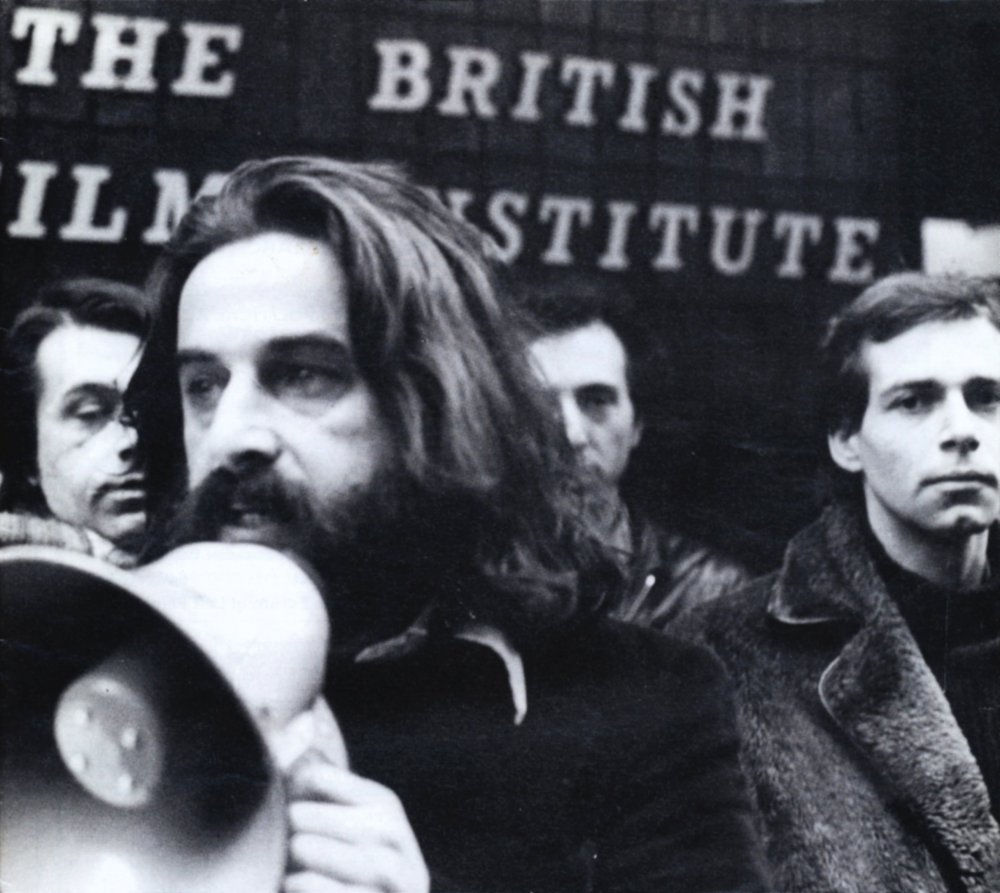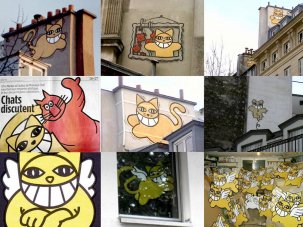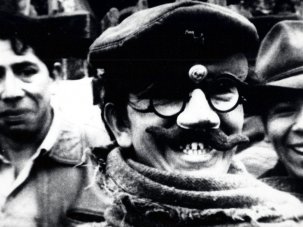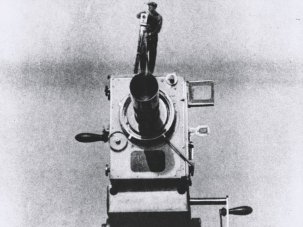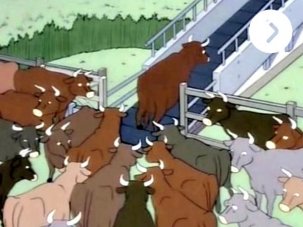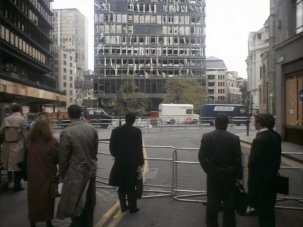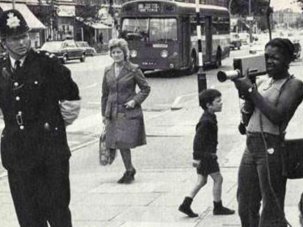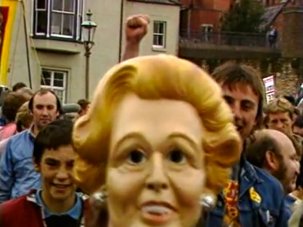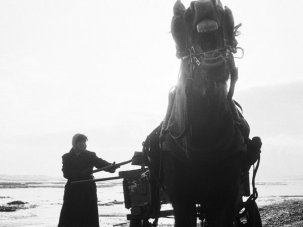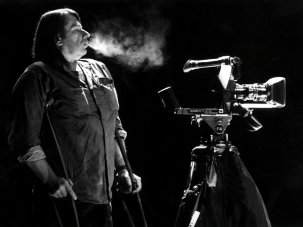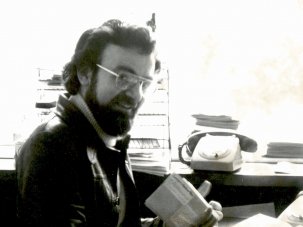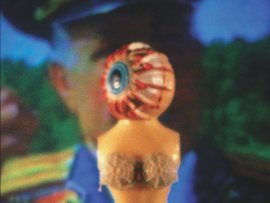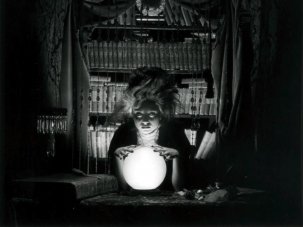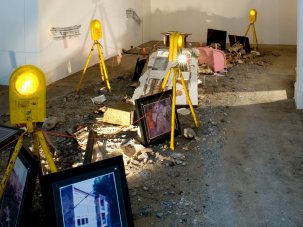When he died suddenly in January 1999, an obituary in the Independent described Marc Karlin as “the most significant unknown film-maker working in Britain during the past three decades”. For contemporaries, he was one of the visionaries mapping independent British film culture, with its roots in the 70s and its expansion in the first decades of Channel 4 television. He also filmed his way through decades of huge change, wrestling with the pressures of Thatcherism, the demise of manufacturing, the challenge to socialism after the fall of the Berlin Wall, the shape-shifting impact of digital technologies and the rise and rise of Rupert Murdoch. But 16 years after his death his 12 essay documentaries have remained largely invisible and his name is absent from the canon of British cinema.
Between Times: Marc Karlin Weekend includes screenings of 11 films by Marc Karlin including talks and discussions in collaboration with the Marc Karlin Archive, 4-6 March at the 2016 AV Festival in Newcastle, Sunderland and Middlesbrough.
Marc Karlin: Look Again, edited by Holly Aylett, is published by Liverpool University Press.
For further information about Karlin, visit spiritofmarckarlin.com.
In the late 70s Karlin was working on ideas for his seminal For Memory (1982): “A traveller once wrote, ‘In our dreams of future cities, what frightens us is what we most desire: namely to be free from the tyranny of memory.’” Using the central metaphor of a futuristic city, the documentary explores how heritage, what is protected within the city walls, exists in relation to the vulnerability of what might be recalled beyond the boundaries. It explores how memory is constructed in time, and how images from the past locate us in our present lives in particular ways.
The instability of the image, its openness to interpretation, are central to what is being unravelled in For Memory. This is resonant of Chris Marker’s work, in which image is treated as a moment in place and time, and for both Marker and Karlin the understanding of the relation between image and memory produces a constantly shifting philosophical journey.
Marc spent his early years in France, meeting Marker when he returned from London to Paris to make a film in 1968; subsequently they collaborated. Marc filmed at the Peugeot works in Sochaux: Marker – who had previously filmed a strike there – was denied access, but Karlin pretended he was filming on behalf of the Common Market. He contributed footage to a project for which Marker gathered offcuts from films made by filmmakers of the Left. Marc recalled going to a place where film cans from around the world – Cuba, Colombia, Canada and Peru – were stacked along pipes above which sat Marker at his editing console. This project evolved into Le fond de l’air est rouge (1977); in 1988, commissioned by the late Michael Kustow, Marc made the UK version for Channel 4, for which Marker came up with the English title A Grin Without a Cat.
For both Marker and Karlin, what is at stake in the image is a particular relation to the past; in the development of Marc’s films the act of remembering is necessary to liberate us to construct alternative visions for the future. Marc was deeply uneasy in what Rilke, a century earlier, had called ‘the interpreted world’: he felt he was living at a time saturated by images and their interpretation. He saw his role as a propagator, keeping alive in his audience the hidden meanings of the political unconscious. In his notebooks there are various references to Rilke and one quotation occurs several times: “We are the bees of the invisible. We wildly gather the honey of the invisible to store in the great golden hive.”
Part of this task is recovering images, as in For Memory, in which three stories, marginalised or distorted in official versions of British history, are recalled: Oliver Cromwell’s execution of troops sympathetic to the radical Levellers; the battle of Cable Street, to stop a Fascist march, in the 1930s; and the history of the miners of Clay Cross colliery in Derbyshire. The challenge Marc addresses to us as viewers, citizens and younger generations, is to look more critically at our own contemporary world, and to look again.
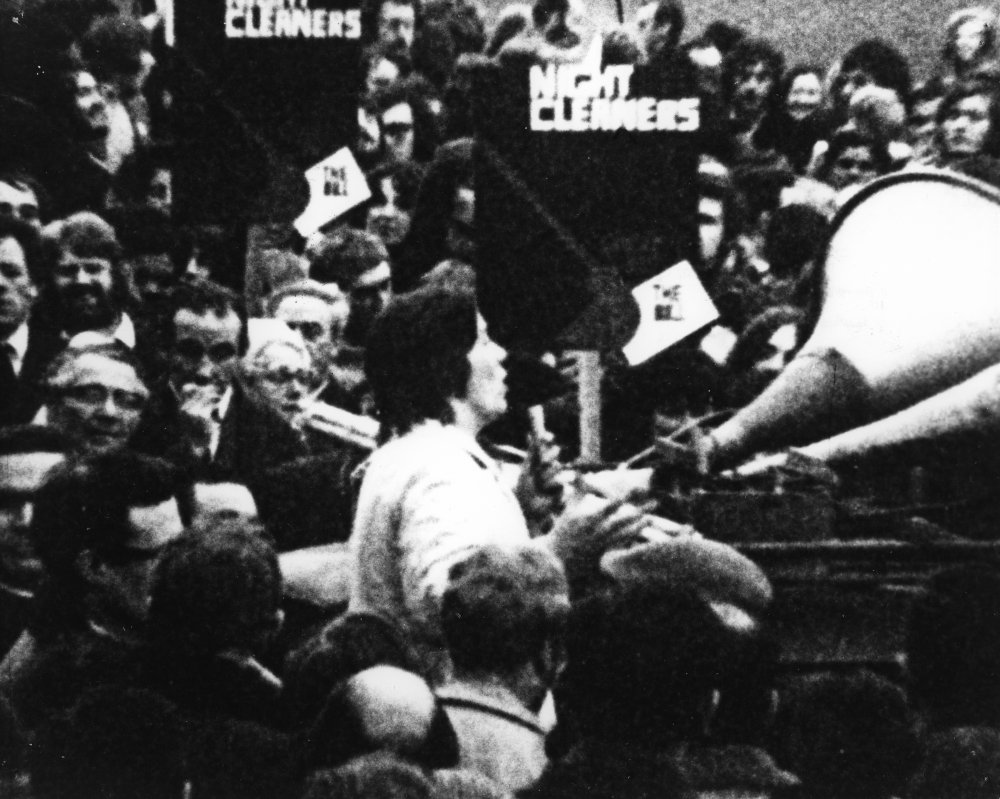
Nightcleaners (1975)
In Nightcleaners (1975), a documentary made by the Berwick Street Film Collective about the underpaid and invisible women working to keep the city clean, Marc films one of the cleaners working as any of us might have glimpsed her through an office window. She is registered momentarily from the pavement below as we pass by, such a habitual part of our environment that the meaning of the image is lost to us, leaving the woman fixed in her functional role and effectively invisible. But Marc wanted to film “how that sight is arrested by a consciousness that informs it, looks at it, interprets it, challenges it and wants to change it… but it was all too complicated.” Perhaps, but the way in which that intention informs the image-structuring of the whole film has made Nightcleaners a landmark for film theorists, and one of the only films Marc worked on that is still occasionally screened.
I saw it first at university when Stephen Heath, professor of English at Cambridge, presented it as an exemplary text for structuralist narrative analysis. Here was a film which had its roots in workers’ struggles but whose experimental form took it beyond the perceived limitations of contemporary agitprop cinema. It had a catalytic effect, not least on the editorial of Screen, the leading theoretical journal of the time. The reception of Nightcleaners added momentum to a major shift in which the editorial began to engage with cinema as social praxis, inviting a discussion with practitioners from the Independent Filmmakers’ Association, the IFA, in which Marc was a leading player.
While Nightcleaners transcended its historical moment, For Memory was promptly forgotten. The film was one of the BBC’s first independent commissions, part-funded by the BFI Production Board. Marc complained: “My work is embroiled in the corridors of the BBC. The film is such a precedent for them that they find it difficult to write up a contract. It’s as if they think that by doing so things might never be the same again.”
Completed in 1982, it was only broadcast in 1986, after a long correspondence with the BBC. For Memory’s form and length – almost two hours – were uncompromising, but it slipped out almost unnoticed on BBC2 on a bank holiday afternoon.
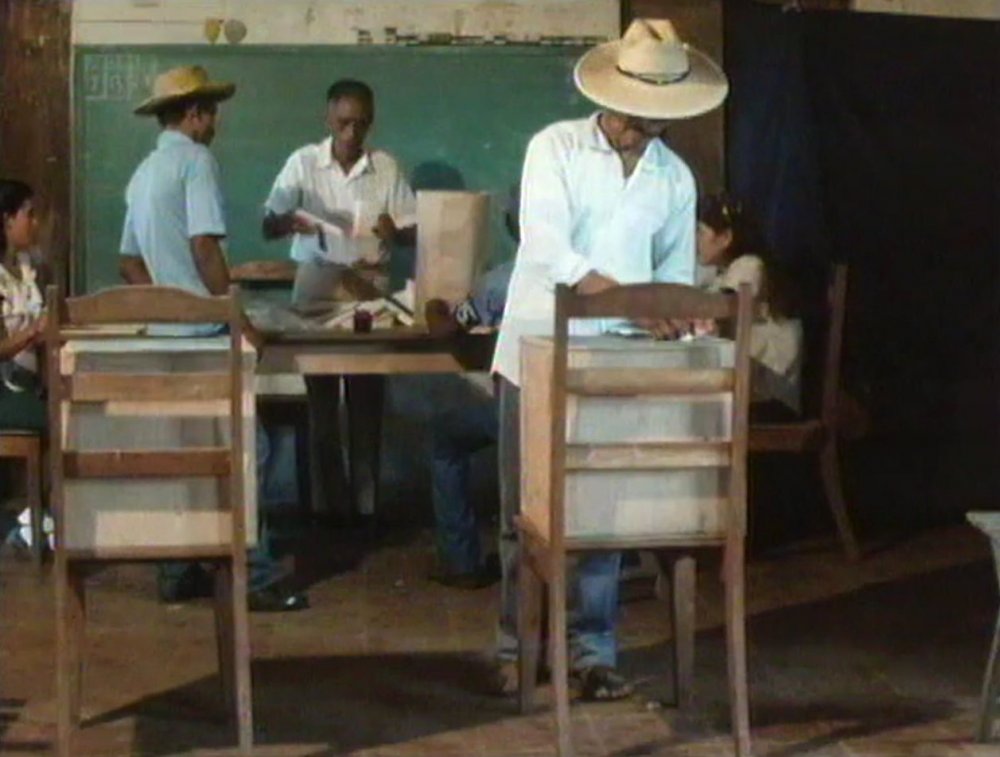
Nicaragua Changes (1985)
It was a BBC programme that prompted the formation of the IFA in 1976 – an overview of British independent cinema that managed to ignore more radical work. Marc regarded this exclusion as a form of censorship, and the IFA subsequently led pressure for independent voices to be integral to a proposed new channel.
Channel 4 facilitated a decade of experiment which gave creative space in which Marc and his contemporaries challenged existing politics of representation and pushed the limits of documentary conventions. Moving away from working collectively, in his films for Channel 4 – Nicaragua Series (1985), Utopias (1989), Scenes for a Revolution (1991) and Between Times (1993) – Marc evolved his essay documentary practice, developing distinctive strategies: the displacement of singular interpretation through multiple voices; complex literary narration; sequences used as metaphors to explore themes; long tracking shots, whether on location along the rim of a volcano or in a studio shoot, moving between blow-ups of images apparently suspended in 3D.
In a letter to a commissioning editor at Channel 4, written in the shadow of the Broadcasting Act of 1990 when commercial pressures threatened Channel 4’s remit and editorial space, Marc restated the case for exploratory, experimental cinema that does not address the viewer as a consumer. He made a distinction between films that “illustrate” and those that “illuminate”, films that “rely on pre-held beliefs” and films that “try to locate what lies behind these held correspondences”. Seeing film as central to the cultural revolution that empowers social change, he made an impassioned plea for more, not fewer “poets who can take the measure of that revolution”.
In his last films, Marc took the essay documentary form further into the shifting sands of fact and fiction. In The Outrage (1995), he travelled through an abstract painting by Cy Twombly, to look at how we relate to art.
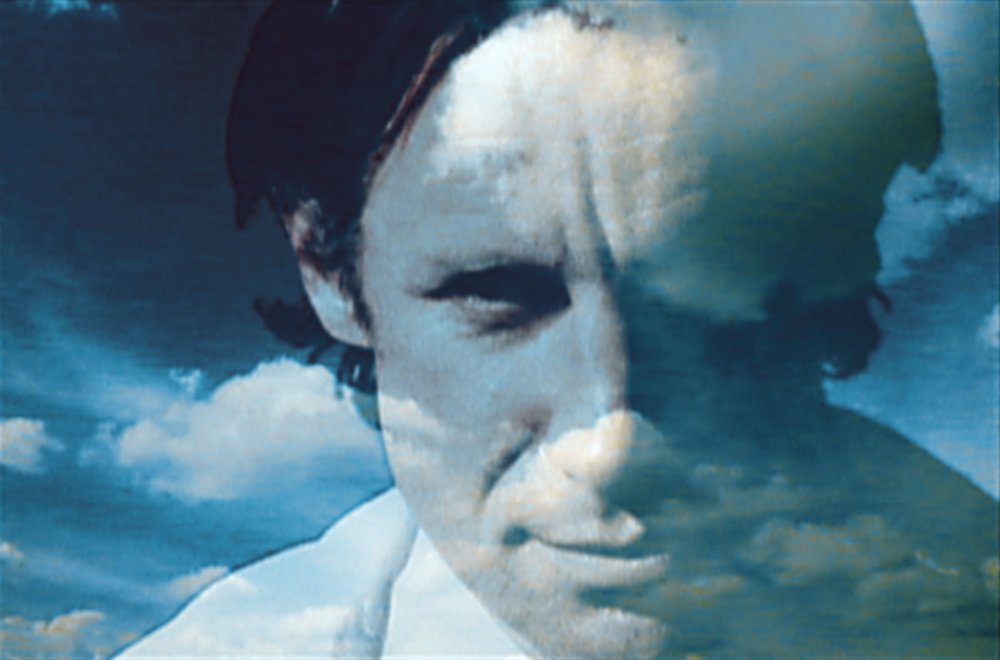
The Serpent (1997)
In The Serpent (1997), to explore our complicity in the success of Rupert Murdoch and his tabloid vision, Marc mobilised a cast of characters that included Lenin, Murdoch, the Voice of Reason (Fiona Shaw) and the beleaguered Michael Deakin (Nicholas Farrell), “a Tony Blair supporter by day and a Ken Livingstone supporter by night”. All are caught up in an allegorical journey, a playful take on Paradise Lost, which starts when Deakin’s commuter train comes to an abrupt stop in a train tunnel. The lights go out leaving Deakin haunted by the first words of the evening paper’s headline, “Murdoch gets…”
In the past three years the Marc Karlin Archive has collaborated with various regional organisations – including Picture This and the Arnolfini in Bristol, Vivid in Birmingham and the Whitechapel Gallery in London – to screen Marc’s films for contemporary audiences. There is a renewed interest in the independent filmmaking of the 70s and, since Channel 4’s 30th anniversary, in the contribution of the Independent Film and Video Department, and Marc and his contemporaries, to our film history.
The context may have changed for the questions and political unconscious explored in Marc’s films, but their layered vision enables the films to transcend their historical moment. His themes are still relevant, and for their ambition and creative achievement deserve to be widely seen.
-
Sight & Sound: the May 2015 issue
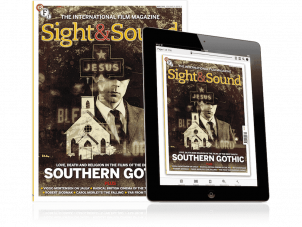
Born on the bayou – the gothic cinema of the American Deep South, plus The Falling, A Pigeon Sat on a Branch Reflecting on Existence, Jauja, Force...
-
The Digital Edition and Archive quick link
Log in here to your digital edition and archive subscription, take a look at the packages on offer and buy a subscription.




